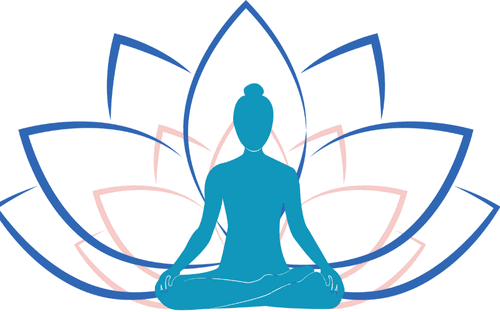Unlock Better Sleep: Master the 90-Minute Rule for a Restorative Night

Introduction: The Importance of Sleep and Sleep Cycles
Sleep is an essential component of human health and well-being, influencing various aspects of life, including cognitive function, emotional balance, and physical health. Despite its significance, many individuals often underestimate the importance of adequate sleep, frequently prioritizing other activities over rest. Understanding the science behind sleep can lead to improved overall wellness and productivity.
A crucial element of effective sleep is the sleep cycle, which typically lasts around 90 minutes. This cycle consists of several stages, progressing through light sleep, deep sleep, and rapid eye movement (REM) sleep. Each stage plays a vital role in restorative processes. For instance, deep sleep is particularly important for physical recovery, while REM sleep is essential for memory consolidation and emotional regulation. Recognizing how these cycles function allows individuals to strategize their sleep schedules more effectively.
Mastering the timing of sleep can greatly enhance its restorative effects. The concept of aligning sleep durations with these 90-minute cycles can be a practical approach for those looking to optimize their rest. By understanding one’s own sleep patterns and how the body operates within these cycles, it becomes possible to wake up feeling refreshed rather than groggy. As society increasingly demands high levels of productivity, acknowledging the necessity of sleep, along with its cycles, becomes paramount.
Neglecting the metabolic and cognitive benefits that sleep provides can lead to a myriad of issues, including decreased focus and impaired decision-making capabilities. Importantly, as we delve deeper into the 90-minute rule, recognizing the profound impact of sleep cycles on daily performance will help establish a strong foundation for personal strategies aimed at achieving restful nights.
Understanding the 90-Minute Rule: Origins and Scientific Basis
The 90-minute rule, a guideline for optimizing sleep, has its origins in scientific research that delves into the structure of sleep cycles. Sleep is divided into stages, which are categorized into two types: non-rapid eye movement (non-REM) sleep and rapid eye movement (REM) sleep. Each complete sleep cycle typically lasts about 90 minutes and encompasses all these stages, allowing the body to undergo various restorative processes.
During a sleep cycle, an individual first enters the non-REM stages, which comprise three distinct phases – light sleep, deep sleep, and the transitional state leading to REM sleep. Light sleep occurs initially and involves a slight reduction in consciousness and the ability to be easily awakened. It is followed by deep sleep, critical for physical restoration, growth, and immune function. The final phase of a cycle, REM sleep, is characterized by heightened brain activity and vivid dreaming, playing a crucial role in cognitive functions and emotional regulation.
Numerous studies have supported the notion that aligning sleep patterns with these natural cycles can improve sleep quality and overall well-being. Research indicates that waking up at the end of a sleep cycle, rather than in the middle, leads to a more refreshed feeling and reduces grogginess. This understanding has prompted sleep specialists to recommend that adults aim for whole cycles—typically five to six cycles per night—for optimal restorative sleep.
By incorporating the 90-minute rule into their daily routines, individuals can adjust their sleep schedules to respect these natural rhythms. For instance, targeting bedtime so that awakening coincides with the end of a cycle helps facilitate a smoother transition into wakefulness. Embracing this practice not only enhances sleep quality but also aligns physical and mental health with the body’s innate sleep architecture.
Health Benefits of Following the 90-Minute Rule
Adhering to the 90-minute sleep rule offers a multitude of health benefits that significantly enhance both physical and mental well-being. This method, based on the natural sleep cycles of approximately 90 minutes each, allows individuals to optimize their rest and thereby experience improved cognitive function. When one wakes up at the end of a sleep cycle rather than in the middle of one, they tend to feel more alert and refreshed. Research has shown that better sleep contributes to enhanced memory consolidation and learning, which are essential for productivity and overall cognitive performance.
Moreover, following this structured approach to sleep has a profound impact on mood regulation. Quality rest assists in the stabilization of mood by balancing neurotransmitters in the brain, fostering an emotional state conducive to resilience and positive outlooks. Individuals who master the 90-minute rule often report reduced levels of anxiety and depression, attributing their improved mental health to the enhanced quality of their nightly rest.
The advantages extend to physical health as well. Restorative sleep plays a vital role in strengthening the immune system, which is crucial for defending against infections and diseases. A well-rested body supports the production of vital immune cells and antibodies, contributing to overall vitality and longevity. Furthermore, the correlation between adequate sleep and longevity has been backed by numerous scientific studies. These findings indicate that consistent high-quality sleep not only fosters heart health and reduces the risk of chronic illnesses but also enhances life expectancy.
In essence, committing to the 90-minute sleep rule can result in a transformative shift in one’s health. By prioritizing sleep that follows this natural rhythm, individuals position themselves for improved cognitive function, better mood stability, and a fortified immune system, all contributing to a healthier, more fulfilling life.
Implementing the 90-Minute Rule: Routines and Environment Tips
Successfully integrating the 90-minute rule into one’s daily routine requires a structured approach that emphasizes both consistent sleep patterns and the creation of a favorable sleep environment. This begins with establishing a regular sleep schedule, where individuals go to bed and wake up at the same time every day. Consistency reinforces the body’s natural circadian rhythms, enhancing overall sleep quality. Furthermore, it is beneficial to organize bedtime rituals that promote relaxation. Activities such as reading, stretching, or practicing mindfulness can signal to the body that it is time to wind down, ultimately facilitating smoother transitions into sleep.
The environment plays a critical role in achieving restorative sleep. To create a conducive atmosphere, ensure that the bedroom is dark, quiet, and cool. Consider using blackout curtains to block out light and earplugs or white noise machines to mitigate disruptive sounds. Additionally, making the bed genuinely comfortable through a quality mattress and supportive pillows can significantly impact sleep cycles, allowing for complete sleep cycles lasting 90 minutes or more. Limiting screen time in the hour before sleep can also enhance melatonin production, which is essential for achieving deeper restorative sleep.
For individuals interested in tracking their sleep cycles more effectively, multiple tools and technologies are available. Sleep tracking apps and wearable devices can monitor sleep patterns and cycles. This data can offer insights into sleep quality and duration, enabling users to adjust their routines accordingly. Similarly, maintaining a sleep diary can help in recognizing patterns and identifying behaviors that may hinder restorative sleep. Modifying lifestyle habits, such as managing caffeine intake and incorporating physical activities during the day, can further support adherence to the 90-minute rule, promoting better sleep health in the long term.





